Tech
Gear Eye Review: The Ultimate Gear Tracking Solution?
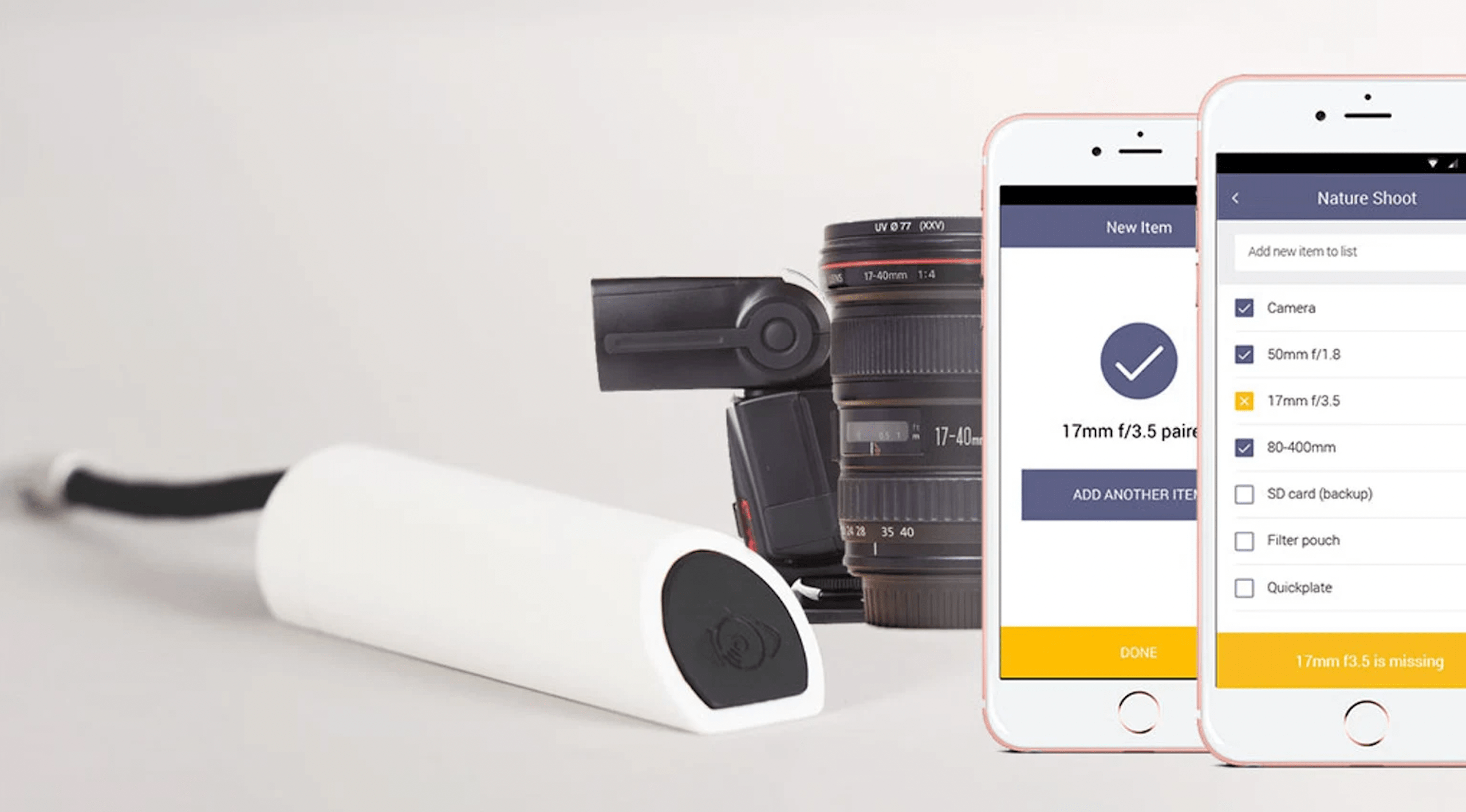
Have you heard about the gear tracking solution, Gear Eye?
It was initially introduced into the market as a crowdfunding campaign in 2015 or so. And now, that product has finally officially been released!
For today’s GearEye review, we’re going to take a closer look at what this product can do for you! We hope that, by the end, we would have helped you determine whether Gear Eye is something that you want to buy into or something that you want to pass on:
Never Lose a Piece of Gear Again
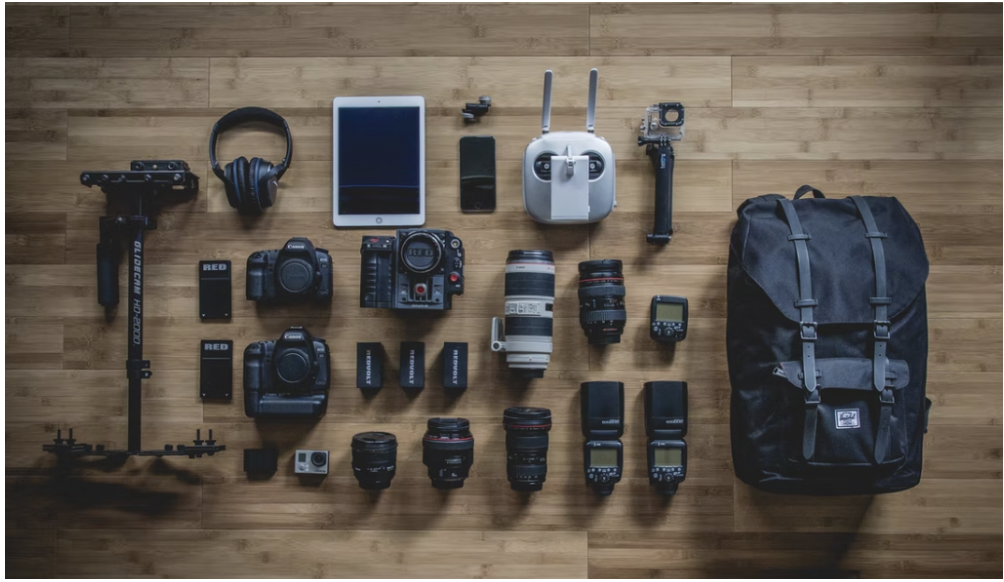
Gear Tracking from Jeff Hopper
GearEye’s tagline is ‘Never Lose a Piece of Gear Again!’
Back when it had just been a crowdfunding campaign, many of those whose professional career required them to travel with valuable equipment backed the product’s launch.
And why wouldn’t they? Who wants to have to continue replacing equipment that they need for work — important equipment that, more likely than not, are incredibly expensive to replace?
In any case, GearEye offered itself up as a solution for this issue. But, what have they done to actually accomplish this? That’s what we’ll be talking about next:
The Creation of The Ultimate Smart Gear Management System!
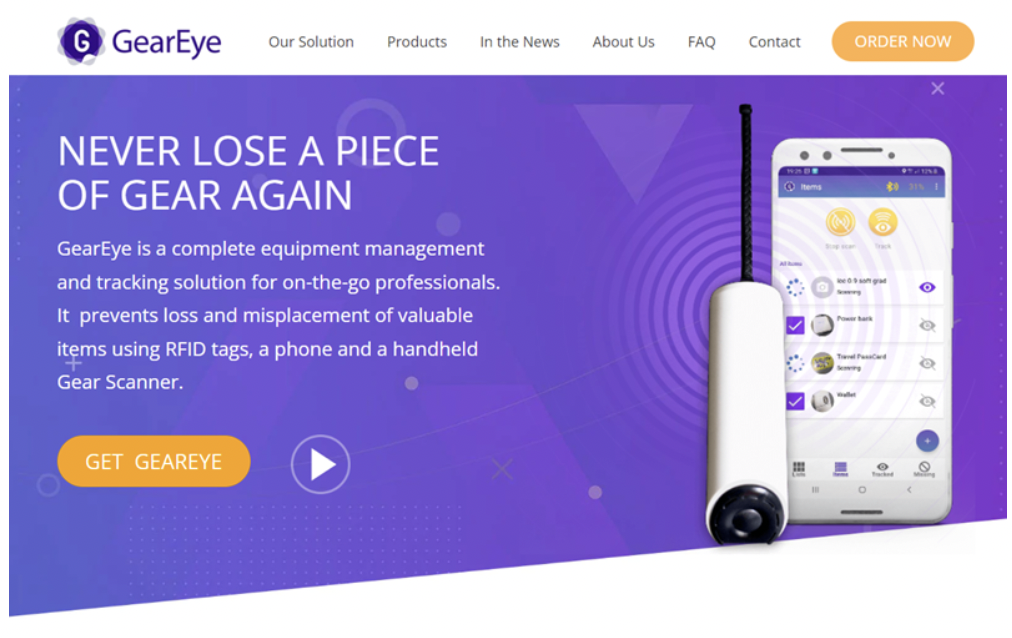
Gear Management System – GearEye!
According to the CEO of Gear Eye, Julia Lerner, GearEye went through several stages. This is probably most evident to the original backers of the GearEye crowdfunding campaigns, who might remember that there had been initial plans for a smartphone case that would work similarly to the GearEye dongle that they eventually ended up choosing not to create.
But, based on an interview that Julia Lerner had released regarding GearEye’s manufacturing process, there were many other details that they had to consider carefully to truly make GearEye the ultimate gear tracking solution that it is today. These include:
The GearEye Dongle
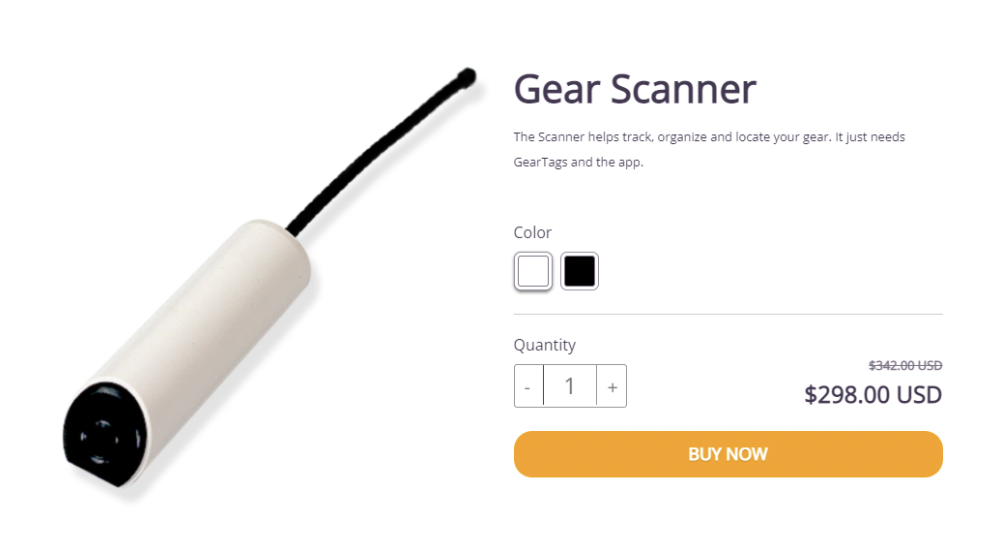
GearEye Dongle / Scanner!
The GearEye Dongle is the compact RFID scanner that is included with the GearEye kit (although you can also purchase it separately!)
This device was made to fit comfortably in the palm of your hand and wouldn’t be bothersome to bring along even if you’re only carrying the smallest messenger bag that you have.
Just to make it perfectly clear, the dongle serves as the focal point for all your equipment. This is what you will need to use in order to search for missing items later — it will work in conjunction with the app to determine how close or how far you are to a given item!
How Does GearEye Keep Track of All Your Equipment?
GearEye tracks items with RFID (Radio Frequency Identification) technology.
If you want specific details, according to the GearEye FAQs page, they use different types based on your specific country’s regulations. These types are EPC Gen 2 and UHF 860-950 MHz band (ISO 18000-6C).
![]()
How to Use the GearEye Dongle?
The GearEye dongle shines the most when you’re tracking equipment under the “Locate” mode. As you can guess from the name, this is the mode that will allow you to track lost work equipment — with the dongle fully making use of RFID technology to look for the items that you’ve tagged with GearEye’s affordable RFID GearTags.
The GearEye RFID Tags
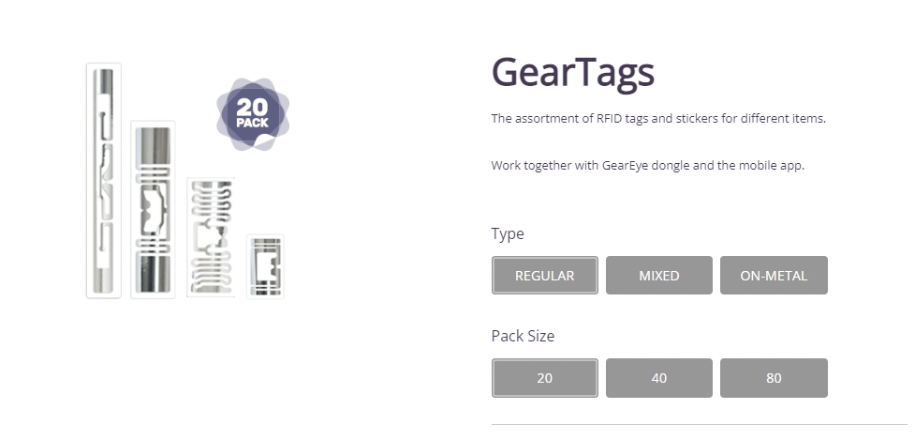
GearEye – RFID Tags!
Next, let’s talk about the RFID tags that act as tracking devices for all of your essential gear. These RFID tags are perhaps better described as RFID stickers — they are thin and are easily attached to all of your expensive equipment.
Each of these tags comes equipped with RFID technology and will serve as the focal point for the dongle to start working — allowing you to easily track these individual items without worry!
How to Use the GearTags?
This part is fairly straightforward! As a ‘sticker’, all you need to do to use these GearTags is to remove the protective film away from the tag in order to stick it onto the surface of your gear.
Each tag was created with the highest quality adhesive. GearEye has made sure to consider the type of material that your gear may come in as well. This is why they created both regular tags that come with a powerful adhesive that works with most materials (i.e., not on metal items) and metal tags that were created to stick to metal items!
GearEye also offers their tags in several sizes so that you won’t have to worry about using awkwardly large or small stickers on your gear!
Why RFID Tags and Not Bluetooth Tags?
According to the CEO of GearEye, Julia Lerner, they decided to choose RFID stickers over the more commonly used BLE Tags (Bluetooth Tags) that most other trackers use because of several reasons:
- RFID tags have a small and slim profile — which is easier to attach to smaller items.
- RFID technology is also more accurate in comparison, allowing you to pinpoint the location of an item without trouble.
- GearEye’s tags are also RFID UHF stickers, which mean that they are battery-free and will last forever — requiring no replacement.
- The previous fact and the fact that RFID tags are also far cheaper — with the price difference being anywhere from $0.10 for each RFID sticker and $20-30 each for BLE tags — were also carefully taken into account.
In conclusion, the reason why GearEye chose RFID over BLE tags is that they are low cost (per item), have lasting power, and are generally just more convenient — allowing you to keep a truly impressive number of gear safe without worry.
The GearEye App!
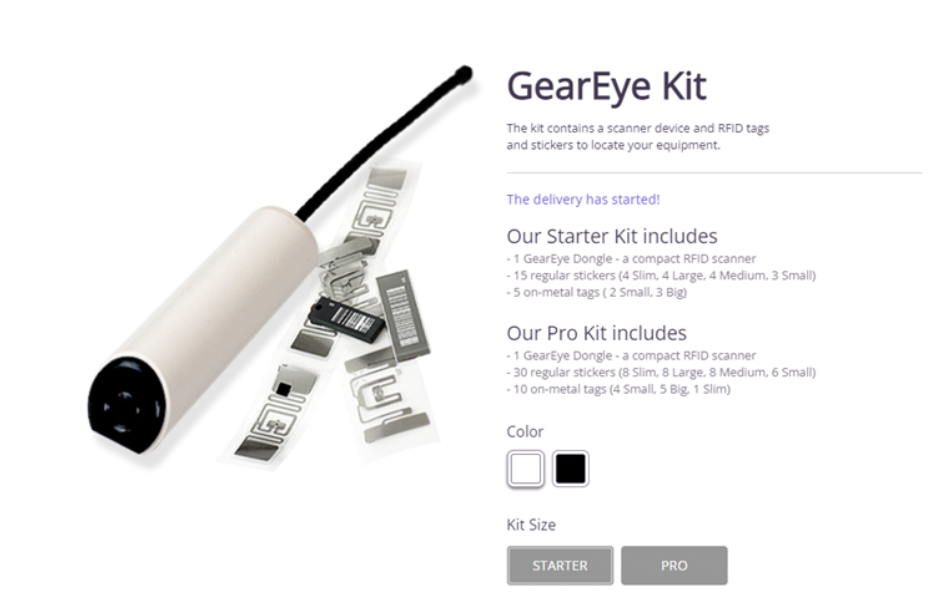
GearEye – Starter & Pro Kit!
The last aspect that we have to talk about is the GearEye app. This is the brain of the entire operation, making it, truly, the perfect solution for on-the-go professionals that are constantly losing gear!
As an important note: this app will work on both IOS and Android devices, so that’s not something that you have to worry about!
How Does the GearEye App Work?
We discussed this somewhat earlier when we were describing the “Locate” mode while we were talking about the dongle, but that’s actually just the beginning of what this app is capable of!
To be perfectly clear, there are three modes that you can use:
Scan Mode
In scan mode, keeping track of the gear that you’ve brought for today’s studio session or are preparing for next week’s beach shoot has never been easier!
It takes only a simple tap for you to scan for all the equipment that you need for a given gig. GearEye will scan the surrounding area for all your items and mark the ones that are not around with an “X” (of course, to make this easier, you also have the option of making customized lists with gig-specific groups of gear required for certain jobs!)
Track Mode
Track mode is perfect for a serial entrepreneur that is literally always on the move. All you have to do is give GearEye permission to run in the background to make this mode work!
After which, it will begin to automatically track your gear — and, on the occasion where you leave something behind, the app will notify you of it immediately, allowing you to begin your search for the item before you can get too far.
Locate Mode
We’ve already mentioned this earlier, so we’ll spare you the details. But, with this mode, you can make use of your phone’s smart sensors (which will enhance GearEye’s scanning accuracy) in order to locate lost items!
The Best Complete Gear Management Solution? | Not Just a Safety Net!
So, what do you think? We personally expressed a lot of positive remarks in this article and we do seriously consider GearEye to be quite the game-changer, but your opinion on this product is entirely up to you!
All we can say is that we like the fact that it is a low-cost solution (with the retail price for the kit with several tags included much lower than most competitors.) We also like the fact that GearEye seems to have carefully considered many of the aspects during the entirety of their product development process. And, finally, we believe that, no matter what kind of work you do, you may be able to find use for it in the end!
Tech
AI in Placemaking: How ERA-co is Using Smarter Data to Build Better Cities

ERA-co is exploring new ways to apply AI in urban design, utilizing data-driven tools to support more thoughtful and responsive placemaking. Rather than replacing human insight, the firm sees artificial intelligence as a partner — one that can enhance how designers understand and shape the spaces where people live, move, and connect.
This approach isn’t about flashy tech or fully automated cities. It’s about asking better questions, revealing patterns we might otherwise miss, and using that knowledge to make decisions rooted in real-world behavior. For ERA-co, AI becomes most valuable when it helps clarify how a city works, layer by layer, so design teams can create places that are not only efficient but also livable and meaningful.
Understanding complexity before optimization
Before talking about smart tools or predictions, ERA-co begins with a foundational question: “What kind of problem is a city?” Nicolas Palominos, Head of Urban Design and Strategy R&D at ERA-co, references the work of Jane Jacobs to frame this.
“As Jacobs reminds us, cities exhibit complex system behavior, where multiple elements vary simultaneously, in subtle interconnected ways,” Palominos explains. “AI can augment our understanding of these parameters to design better places with optimized social benefit.”
According to Palominos, that kind of social benefit can take many forms. It might involve modeling a housing system that supports proximity-based living, such as the concept of the “15-minute city,” or applying predictive analytics to anticipate and respond to events like floods, heatwaves, or infrastructure failures.
ERA-co doesn’t use AI to chase efficiency for its own sake. Instead, the firm uses it to gain a more comprehensive understanding and a clearer picture of a place’s behavior.
Data that matches people, not just places
Not all data is created equal. When it comes to placemaking, ERA-co prioritizes what Palominos calls “spatial and temporal granularity,” which entails not only examining how a space functions on a map but also understanding how people interact with it over time — from hour to hour, and season to season.
“The most valuable data are those with the greatest spatial and temporal granularity for observing people and urban environments,” Palominos says. “Video footage, mobile data, street view imagery, and satellite imagery enable a deeper understanding of how different groups of people perceive and use public space.”
One recent ERA-co proof-of-concept used AI to assess how people visually perceive streetscapes, analyzing elements like enclosure, complexity, and human scale. These insights informed more nuanced design strategies that align with local behaviors, not just abstract zoning plans.
This level of detail matters because even small design shifts can have ripple effects on how people move, feel, and gather. With AI, ERA-co isn’t just tracking patterns but learning from them.
ERA-co’s AI mobility work: Subtle shifts, broader benefits
Some of the clearest applications of AI can be seen in mobility — how people and goods move through cities. It’s here that ERA-co sees measurable gains in both function and experience.
“AI-driven fleet optimization balances supply and demand in bus services and bike-share systems,” Palominos says. “On the consumer side, it streamlines courier and delivery services through route optimization.”
These systems don’t operate in isolation. When they’re better coordinated, they can relieve pressure on road networks, reduce congestion, and lower energy use. But what makes ERA-co’s approach different is that it doesn’t stop at logistics. It examines how those systems impact the daily lives of people who live in and move through a place.
The limits of AI and the role of design judgment
As much as AI can help us see more, ERA-co is careful not to let it make the final call. Cities are more than just systems — they’re layered with memory, identity, and human connection. And not everything meaningful can be measured.
“There have been cases where AI insights pointed us in one direction, but human judgment and cultural understanding led us another way,” Palominos notes.
Sometimes a place functions well on paper, but feels hollow in practice. Other times, a community gathering space might disrupt traffic flow, yet provide invaluable support for social well-being.
This is where design intuition becomes critical. ERA-co uses AI to inform, not dictate, the design process.
Planning for a future in flux
Looking ahead, ERA-co sees AI playing a growing role in helping cities adapt — not just to top physical threats like climate change, but also to slower, less visible shifts in how people live and connect.
“AI will amplify our understanding of how cities function through enhanced spatial representation and analysis, informing better human decision-making,” Palominos says. He references recent findings (like an MIT study showing people walk faster and linger less in public spaces) as examples of trends that would have been hard to anticipate without AI.
Still, the goal isn’t to automate responses to those behaviors. It’s using those insights to reimagine what kinds of public spaces people may need in the future, especially as patterns of connection and isolation shift.
-

 Tech5 years ago
Tech5 years agoEffuel Reviews (2021) – Effuel ECO OBD2 Saves Fuel, and Reduce Gas Cost? Effuel Customer Reviews
-

 Tech6 years ago
Tech6 years agoBosch Power Tools India Launches ‘Cordless Matlab Bosch’ Campaign to Demonstrate the Power of Cordless
-

 Lifestyle6 years ago
Lifestyle6 years agoCatholic Cases App brings Church’s Moral Teachings to Androids and iPhones
-

 Lifestyle5 years ago
Lifestyle5 years agoEast Side Hype x Billionaire Boys Club. Hottest New Streetwear Releases in Utah.
-

 Tech7 years ago
Tech7 years agoCloud Buyers & Investors to Profit in the Future
-

 Lifestyle5 years ago
Lifestyle5 years agoThe Midas of Cosmetic Dermatology: Dr. Simon Ourian
-

 Health7 years ago
Health7 years agoCBDistillery Review: Is it a scam?
-

 Entertainment6 years ago
Entertainment6 years agoAvengers Endgame now Available on 123Movies for Download & Streaming for Free
